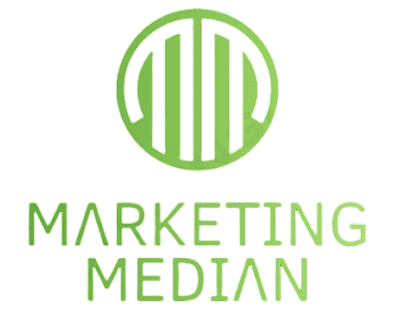In today's highly competitive business landscape, converting leads into loyal customers is critical to achieving long-term success.
As marketers, salespeople, and business owners, understanding the strategies and techniques that drive successful customer conversions is essential for sustainable growth and profitability.
Understanding leads and lead generation
Have you ever been in the middle of a pleasant dinner only to be interrupted by an annoying telemarketer? We're all familiar with the frustrating experience that comes with it.

Marketers comprehend that there are more efficient ways to generate leads than interrupting potential customers. This is when inbound lead generation can be helpful.
Understanding leads' significance and contribution to expanding your business will allow us to convert them into paying customers efficiently.
A potential customer who has taken a specific action indicating interest in your product or service is considered a lead. It's possible to take specific actions such as filling out a form, subscribing to a newsletter, or downloading whitepapers.
Sustained growth and profitability depend on converting leads into customers for any business.
Only after being ready for purchase lead generation appeals to these prospects and develops their interest. Various plans and schemes are utilized to catch your intended spectators' eye and motivate them to take action.
By effectively implementing lead generation techniques, you can build a pipeline of qualified leads more likely to convert into paying customers.
It's important to note that there are different approaches to lead generation. Inbound lead generation focuses on attracting leads organically by providing valuable content and engaging experiences.
On the other hand, some businesses opt to buy leads from third-party providers. While buying leads may seem like a quick solution, it often leads to low-quality leads and wasted resources.
Qualifying and categorizing leads
Not all leads are created equal. Understanding the different types of leads and their readiness for sales engagement is crucial for effective lead conversion.
Each type of lead represents a different level of interest and readiness for sales engagement.
By understanding the characteristics and behaviors of these leads, you can tailor your marketing and sales strategies to convert them into loyal customers effectively.
Marketing qualified leads (MQL)
Prospects who have shown interest in your offerings and are considered more likely to become customers are known as Marketing Qualified Leads.
Your product or service has caught their interest through successful engagement with your marketing campaigns.
Your marketing team defines specific criteria that they meet while clearly demonstrating a need for them. Before passing it on to the sales team, MQLs require additional nurturing and engagement.
Sales qualified leads (SQL)
Sales Qualified Leads are prospects qualified by the sales team as having a high probability of making a purchase.
They have shown a genuine interest in your product or service, have the authority to make buying decisions, and are ready for direct sales engagement.
SQLs are further along the buying journey and require personalized attention and effective sales strategies to close the deal.
Product qualified leads (PQL)
Product Qualified Leads are individuals who have tested your product's worth through a free trial, demo, or freemium offer.
Their direct understanding of how your offering can benefit them makes it more probable for them to become paying customers.
The utilization of product usage data from PQLs provides a distinctive opportunity to adjust your sales tactics based on their individual needs and interests.
Service qualified leads
Service Qualified Leads are existing customers who have expressed interest in additional products or services you offer. These leads already have a relationship with your brand and are more receptive to upselling and cross-selling opportunities.
You can maximize customer lifetime value and build loyalty by identifying service-qualified leads.
What is lead generation?
Lead generation refers to the activities and strategies to attract prospects and capture their information to initiate sales.

It involves a combination of marketing tactics, content creation, and lead nurturing to guide potential customers through the sales funnel.
Here are some effective lead-generation strategies to consider:
Job applications
Job applications can serve as an excellent source of leads, especially for B2B businesses. When potential candidates apply for positions at your company, they already show interest in what you offer.
By capturing their contact information and staying in touch throughout the recruitment process, you can nurture these leads and convert them into customers, even if they don't ultimately join your team.
Blog posts
Maintaining an informative and engaging blog is a powerful way to attract leads. Creating valuable content that addresses your target audience's pain points and challenges can position your brand as a trusted authority in your industry.
Ensure to include compelling call-to-actions within your blog posts, such as subscription forms or content downloads, to capture leads and initiate the nurturing process.
Coupons and discounts
Offering exclusive coupons or discounts is an effective way to incentivize leads to take action.
By providing a special offer that adds value to their purchase, you can entice prospects to provide their contact information and move further down the sales funnel.
This strategy is particularly effective for e-commerce businesses looking to drive conversions and increase average order value.
Live events
You can organize or participate in live events like webinars, workshops, or conferences to generate high-quality leads.
You can display your knowledge, network with potential clients, and save their details for future reference through these occasions.
Additionally, live events offer valuable networking opportunities and can help you establish strong relationships with industry influencers and thought leaders.
Online content
Creating valuable online content, such as e-books, whitepapers, or guides, can attract leads and position your brand as an industry leader.
By offering insightful and actionable resources, you provide value to your target audience while establishing credibility and trust.
Including lead capture forms within your content allows you to collect contact information and initiate the lead nurturing process.
Promotional channels for lead generation
Now that we understand the different lead generation strategies let's explore the various promotional channels you can utilize to reach your target audience and generate leads.
Here are some effective marketing channels for promoting landing pages and capturing leads.
A. Content marketing
This strategy aims to allure and involve your target audience by generating and disseminating significant, applicable material. One can include blog posts, articles, videos, infographics, and podcasts.
By consistently delivering high-quality content that addresses the needs and challenges of your audience, you can attract leads organically and establish your brand as a trusted resource.
B. Email marketing
Email marketing remains one of the most powerful lead generation and nurturing channels. You can reach your leads directly in their inbox by building an opt-in email list and crafting compelling email campaigns.
Successful email marketing requires personalization, segmentation, and automation. Apply these methods to convey specific messages that connect with your audience and bring them closer to purchasing.
C. Ads and retargeting
Online advertising, such as pay-per-click (PPC) and display ads, can drive traffic to your landing pages and capture leads.
With careful targeting and compelling ad copy, you can reach your ideal customers and encourage them to take action.
Your ability to display advertisements to users that have interacted with your website before or shown an inclination towards what you provide is made possible by retargeting. Lead conversion chances are increased.
D. Blogging
Maintaining a well-optimized blog not only attracts organic traffic but also serves as a powerful lead-generation channel.
You can capture leads and guide them through the sales funnel by consistently publishing valuable content and including relevant call-to-actions within your blog posts.
By guest blogging on authoritative websites in your industry, you can expand your reach and attract a wider audience.
E. Social media
A rare chance to interact with your target audience and produce leads is presented by using social media platforms.

Creating interesting content for social media, participating in pertinent conversations, and executing focused ad campaigns can help you increase website traffic. One can obtain leads by capturing them.
Your lead-generation strategies can be tailored accordingly for better audience understanding with the use of valuable insights and data provided by social media.
F. Product trials
If your business offers a product or service that can be experienced through a trial or demo, leveraging this approach can be highly effective in generating leads.
Allowing potential customers to try your offering before making a purchase builds trust and confidence in your brand.
Capturing their information during the trial period can help you nurture these leads into paying customers.
G. Referral marketing
Word-of-mouth has the potential to generate leads while keeping costs low efficiently. Urge your present customers to refer their friends, coworkers, or associates to your enterprise.
Providing incentives such as discounts or rewards can prompt loyal customers to advocate for your brand. Generating high-quality leads and building robust brand loyalty and trust are benefits provided by referral marketing.
The drawbacks of buying leads
While buying leads from third-party providers may be tempting, it's important to understand the drawbacks and risks associated with this approach.
Here are some reasons why relying on organic lead generation and building opt-in email lists is a more effective and sustainable strategy:
By focusing on organic lead generation and building opt-in email lists, you ensure your leads are genuinely interested in your offerings and more likely to convert into paying customers.
It's a long-term investment that pays off in terms of lead quality, engagement, and customer loyalty.
Qualifying leads for sales
Once you have generated leads, it's crucial to qualify them based on their level of interest and the information collected.
Qualifying leads helps you identify those most likely to become customers and allows you to prioritize your sales efforts effectively. Here are some ways to qualify leads.
When qualifying leads, it's essential to collect enough information to determine their interest and fit for your product or service.
This includes demographic data, company information (in the case of B2B), and insights into their specific needs and pain points.
Lead scoring for effective lead management
Lead scoring is a valuable method for quantitatively assessing the quality of leads and prioritizing your marketing and sales efforts.

You may determine the best-qualified prospects and adapt your method by assigning lead rankings based on established criteria. Several crucial factors should be considered when implementing lead scoring.
By consistently evaluating and updating lead scores, you can ensure that your sales team focuses on the most qualified and ready-to-convert leads.
This alignment between marketing and sales efforts improves efficiency and increases the chances of lead conversion.
Final thoughts on turning potential leads into loyal customers
Inbound lead generation is a powerful strategy for turning leads into loyal customers. When properly executed, this can drive business growth and maximize revenue potential.
Remember, capturing and nurturing leads organically is the key to long-term success. Avoid the pitfalls of buying leads and focus on building opt-in email lists and engaging your target audience through valuable content and personalized experiences.
Following this guide's strategies and best practices can generate high-quality leads, increase conversions, and build lasting relationships with your customers.
For more effective lead generation and lead targeting, check out Marketing Median.
Don't let your leads go cold—take action today and start turning them into valuable customers who will contribute to the success of your business.
